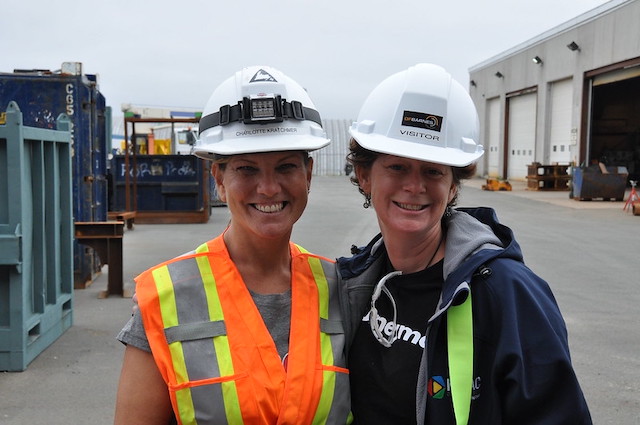We don’t have to tell you that there is a severe labor shortage in the construction industry. It’s been making headlines for years. After the pandemic, however, things have gotten worse. Every business is finding it hard to find willing workers. Projects are being delayed due to lack of labor and businesses are having to offer more money and benefits to attract applicants. All of this has increased the cost of construction, leading owners to push pause on their projects to see if pricing goes down.
One bright spot in this mess is the fact that more women than ever are working in the construction industry. The steady increase in the number of women working in construction has been a surprise to some, but not to the women who work there. The benefits of working in the industry include making a living wage, pay parity, satisfaction in the work, and a lack of student loan debt.
Construction companies that are finding it hard to find “traditional” construction workers would do well to pivot their strategies and target women for their next hires. But before we provide some tips for companies who want to attract women, let’s look at where we are and what women can do.
What percentage of construction workers are women?
As of 2022, women make up 10.9% of the construction workforce (up from 9.9% in 2018). The gender pay gap in the industry is 95.5% (significantly lower than in the general industry, where it is 82.9%).
According to the National Association of Women In Construction (NAWIC), in 2018 women worked in the following capacities in construction:
- Sales and office – 61.3%
- Professional and management – 44%
- Natural resources, construction, and maintenance – 1%
- Service occupations – 21.1%
- Production, transportation, and material moving – 5.9%
What can women do in construction?
While the traditional roles for women in the construction industry have been in the office, that is beginning to change as technology makes physical strength less important. Running today’s tools and equipment is more about properly using controls and implementing technology. This change has opened the playing field for women to take on jobs in the trades and work in the field.
Women are also rising in the ranks, achieving positions like project manager and CEO. Many businesses are learning that women bring a different set of skills than their male counterparts, skills that can be beneficial in running projects and businesses.
Women tend to be more collaborative, naturally seeking input from their peers and coworkers before making decisions. This type of teamwork is sorely needed when working with the adversarial relationships created by construction contract terms.
In addition, with more young people entering the workforce, young women are able to seek out new ways to do things and are embracing technology. This fresh perspective is changing how business is done and the work completed, saving companies money in the long run.

How can construction companies recruit more women?
If your construction company is looking to recruit more women, there are some things you can do to make your company more attractive to them.
- Provide flexible schedules for workers who are primarily responsible for childcare. Workers need to be able to take care of sick children and be available when school/day care isn’t available due to holidays or other circumstances.
- Show women a career path within your company, not just a job. Make sure that your company offers a path of advancement for women, and show them what it is when you first hire them. Generally, just filling a job isn’t going to attract younger workers, especially those early in their career. Workers need to know what’s next and what they need to do or learn to get there.
- Provide professional support for women in your company. This support should include networking, education, and mentoring opportunities. Particularly in smaller companies, women have less chances to learn and interact with their peers. Joining professional organizations, like the National Association of Women in Construction, can give them opportunities to expand their knowledge and gain new skills, both of which can lead to greater productivity and increased profit for the company.
- Review your leave policies to make sure they are friendly to those with family responsibilities. While this is important for both men and women, women generally will need more flexibility in their schedule to take care of others.
- Know your company culture and make changes if needed. In a 2022 survey of women in the industry, Levelset found that 50% of respondents had experienced some sort of discrimination during their career, and 25% had faced some sort of harassment, whether it was inappropriate comments or unwanted attention from coworkers or supervisors. Make sure that your policies crack down on this type of behavior and that it isn’t secretly encouraged by the “good old boys” network.
- Team up with the appropriate apprenticeship or union programs to reach out to students who are interested in the trades. These programs are an excellent way to reach out and recruit new workers.
- Offer training and proper supervision for younger workers or those making a career change. Bringing on workers new to the industry allows you to mold and shape them to meet your specific expectations and teach them your processes. Training programs are particularly attractive to workers.
To address the current labor shortage, construction companies need to look at their culture, structure, and company policies to ensure that they are worker-friendly and supportive, no matter which gender they hire. In addition, providing training and a path for advancement are key benefits that younger workers are looking for. Teaming up with education programs in the industry is another great way to attract more workers.
 and get entered to
and get entered to 


